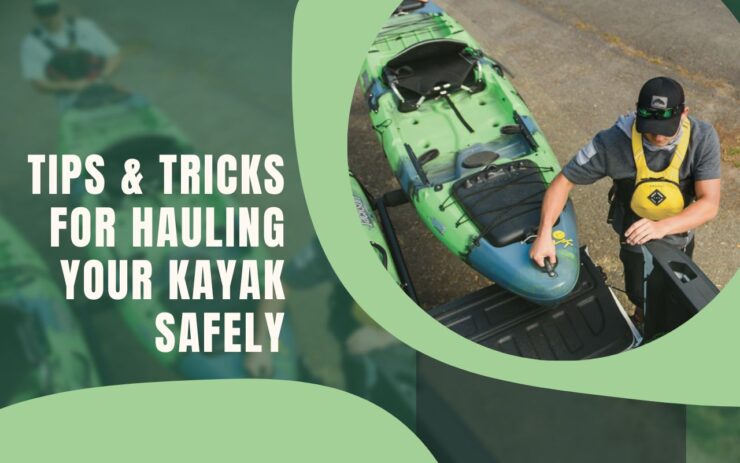Kayaking in the modern sense of the word is an enjoyable and engaging activity that can do so much for the paddler. It is both relaxing and physically challenging, but where it shines most is by making other activities like fishing more optimal and complete. While there are many positives to this increasingly popular hobby, there is also a big negative side that prevents a lot of potential kayakers from ever trying it. That is the logistics of kayaking.
The combination of dimensions and the weight of most kayaks, as well as their design and nature, prevent the kayakers from handling them with ease. Basically, every single logistical side of kayaking is usually a struggle.
From storage at home when not in use to transportation and carrying it when you want to use it, it is a battle. Well, it certainly is a difficult problem to overcome if you do not know what to do. The most important of these is certainly transportation to and from the water as it requires the most time, attention, and care.
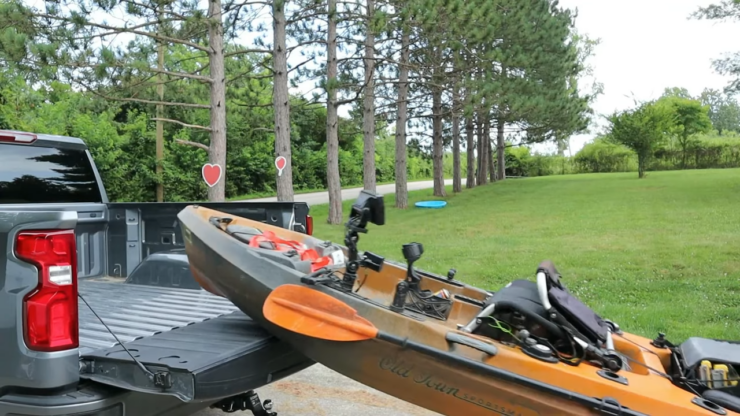
It is all about the vehicle you have or get to use when bringing the kayak to the river, lake, or ocean. Smaller cars need to do it on the roof, and most SUVs can fit the kayak if you bring the back seats down, but the fan-favorite solution is certainly trucks. As the go-to towing and carrying vehicles, trucks are very capable, especially in the off-road conditions that surround most bodies of water. When it comes to kayaks, an average truck should have many issues with transporting it in the bed but there is still the right and wrong way to do it.
Table of Contents
ToggleSecuring the Kayak in the Truck Bed
As you can probably guess, there are numerous sizes of trucks and not all of them have the same length and width of bed. Transporting the kayak inside is tricky for multiple reasons. First of all, it has to go sideways as it is longer than the bed. Secondly, there is the choice of whether you allow it to stick over the tailgate or over the cabin roof. Trucks do not really have roof bars so the kayak cannot go entirely on the roof. So how should you do it in a way that keeps it secure all the way to the water?
Actually, the best way to go about this is not to leave it hanging in any way or go over anything. Transporting a kayak should always be done by leaving the tailgate down for the entire way. As mentioned, most kayaks do not fit with the tailgate closed and it actually becomes an obstacle, rather a helpful part of the vehicle. Most beds are around 8 feet in length, which is the length of the smallest of kayaks. What happens if you have a 12- or a 14-inch kayak? Leaving the tailgate down makes it easier and more manageable.
Making It Stay Put
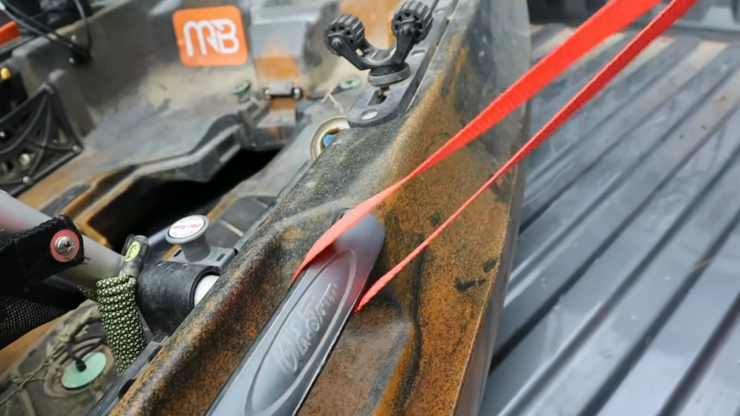
In this section, we go step by step and explain to you how to properly position and secure the kayak with the tailgate down so that it stays put. First and foremost, open the tailgate all the way down. Clear the bed of any other tools or items as you will need all the space you can get.
You can place a cover on the bottom to protect both the bed and the kayak from scratches and chips. The gear you have can be placed in the kayak so that the additional weight keeps it in place. Just make sure it is tight and secure as well.
Bow first, slide the kayak in all the way. You can do this from the trick by pulling the kayak in, or behind the truck by raising it over the tailgate and pushing it in. The kayak will probably have to go in either corner of the bed for some extra inches as it will definitely not fit straight. Depending on the circumstances like the features and type of your truck and kayak, you can raise the kayak sideways or put it right-side-up.
When it is fully in, it is time to secure it in place. Use the anchor points on the kayak and anything else you have, as well as the similar features of the truck bed, to secure the kayak in place with straps.
Cam straps need to go through the anchor points of the kayak and then through the ones to the floor or the sides of the bed. If the bed has tails, even better. The ultimate goal is to keep the kayak from sliding out, which will happen easily if you do not strap it.
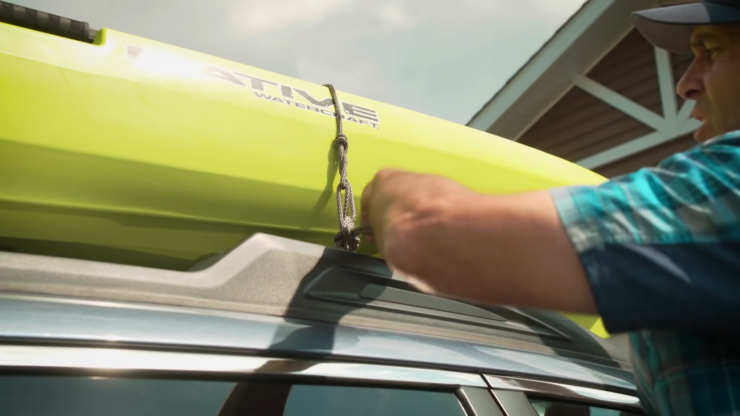
Mind that ratchet straps can cause too much pressure and damage the kayak so be careful how far you tighten them. The stern of the kayak, i.e. the end that is at the tailgate section, needs to be tightened in a V shape.
Run the straps through anchor points in the bed of the truck and through carry handles or mounts on the kayak. Many trucks have additional places to use on the tailgate and on the rear bumper that can be your anchors. Finally, place a red flag at the end of the kayak to warn those behind you in traffic.
Covering the Bed
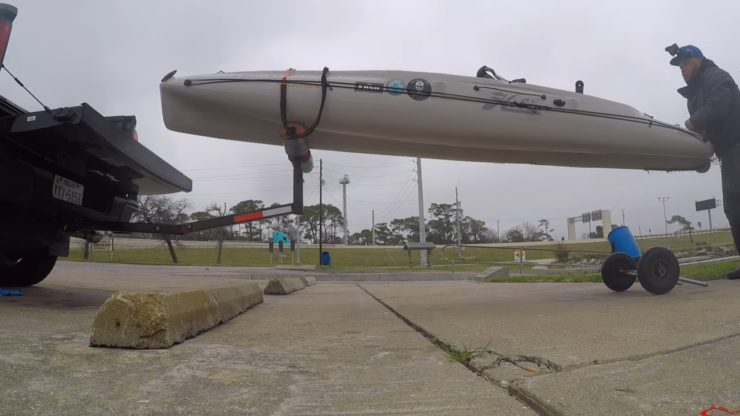
Last but not least, for additional safety and a lot more peace of mind, you can also use a truck bed cover or a kayak cover. These are easy to attach to the bed because of the many anchor points. What is more, you can tighten it with straps/laces that exist on the covers. Not only will this hold everything down additionally but it will also protect the kayak and your gear from the elements as you drive to wherever it is you are kayaking that day.
If you are lucky enough to have a huge truck that allows for the tailgate to close with the kayak entirely inside, you can also use a hard bed cover that locks in place. This is the ultimate way of transporting a paddling boat but it does require one of those enormous trucks not a lot of people need or want.
Adelaide Gentry, a seasoned kayaking enthusiast and expert, is the driving force behind KayakPaddling.net. With over a decade of experience navigating the world’s most challenging waterways, Adelaide combines her passion for adventure with a deep knowledge of kayaking to provide insightful and practical guidance for paddlers of all levels.
Related Posts:
- 12 Best Truck Bed Hitch Extenders for Kayak 2024 -…
- Heavy Duty Fishing: 11 Best Rods And Reels For Big Fish 2024
- 10 Best Saltwater Fishing Boats - Ultimate Angling Adventure
- 12 Best Kayak GPS 2024 - Find Your Way to Adventure
- 15 Best Baitcasting Reel Under $100 2024 - Improve…
- 17 Best Trolling Reels 2024 - Enjoy your Fishing Adventure

